Diaphragm

Indications: difficult breathing
1. This method requires two I-tapes approximately 35-40 cm long.
3. Ask the patient for maximal raise of his/her arm upwards and make a breath.
4. Apply the bases of both tapes on xyphoid process and then along the costal line without tension.
5. Apply the ends of the tapes without tension on spinous processes of vertebra at the level of costal line.
Injury of clavicle

Indications: Rehabilitation after clavicle fracture, dislocation of clavicle
1. Measure and cut one strip of the tape. The length is about 10 cm, depending on patient’s anatomic features. Cut the tape into two strips equal in width. Only one will be used for application.
2. Apply the base of the tape without tension in the region of acromioclavicular joint.
3. Apply the tape with a 15 % tension towards sternoclavicular joint. Apply a tape anchor without tension.
Intercostal neuralgia
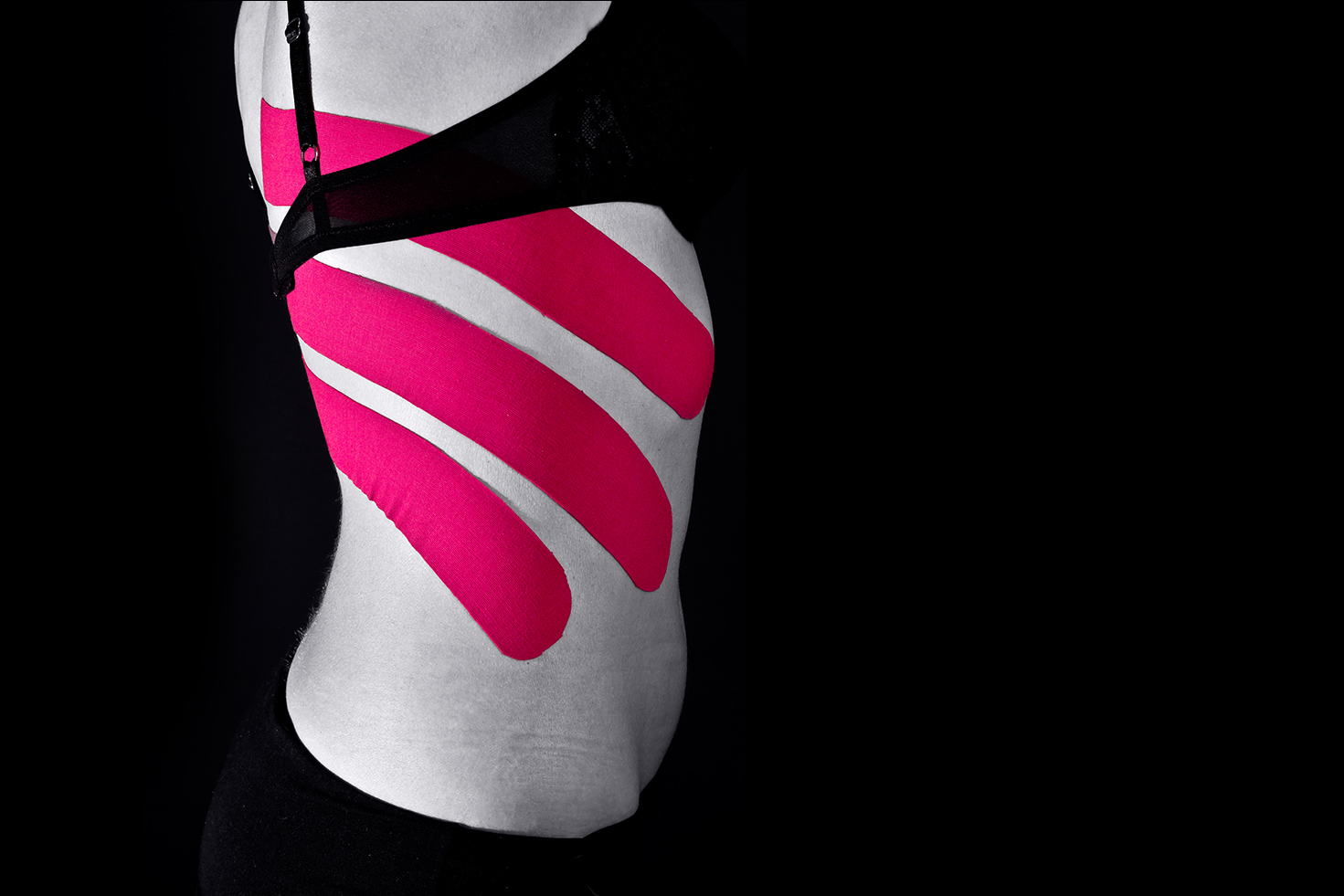
Indications: intercostal neuralgia, recovery period after rib fracture
1. This method requires three I-tapes 20-25 cm long.
2. Ask the patient to make a deep breath and bend his/her body to the site opposite to the region of radiated pain or injury.
3. Apply the base of the tape slightly over the region of insertion of injured rib to the vertebra. Then apply the tape to the chest with a minimal tension.
4. Apply the second and the third tape using the same method under the first tape.
Fracture of ribs
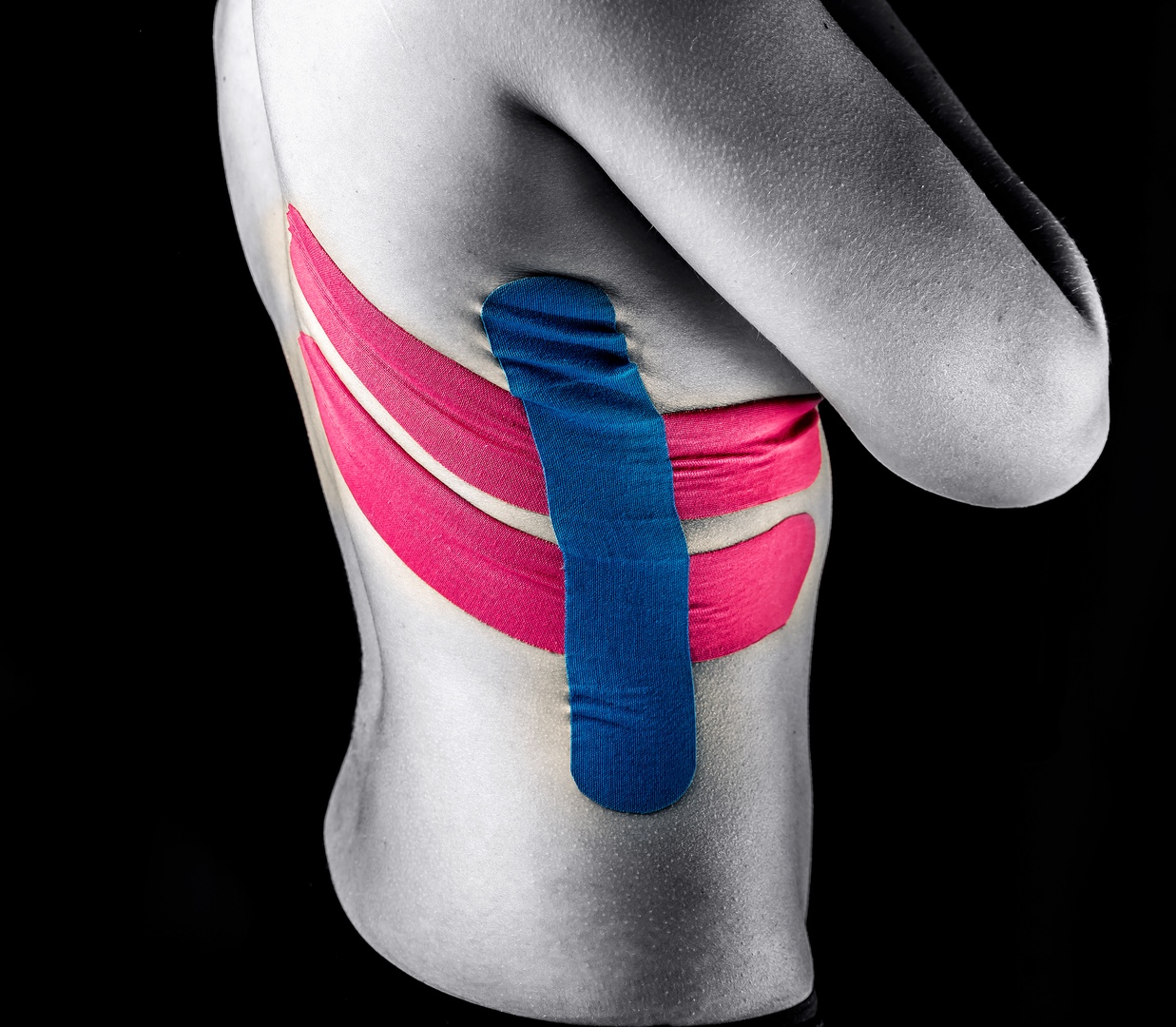
Indications: Fracture of ribs
1. This method requires three I-tapes, two of 20-25 cm long, and one — 15 cm.
2. Ask the patient to make a deep breath and bend his/her body to the site opposite to the injured region.
3. Apply the base of the tape in the region of costovertebral joint of injured rib, then apply the tape with a 15 % tension along the rib towards the sternum.
4. Apply the second tape using the same method under the first tape.
5. Apply the third tape in perpendicular direction to the first two, directly in the injured region. The base of the tape is applied without tension proximally to the region of concern, then application is performed with a 15 % tension. The tape is fixed without tension distally to the first two applications.
Acute injury of ribs
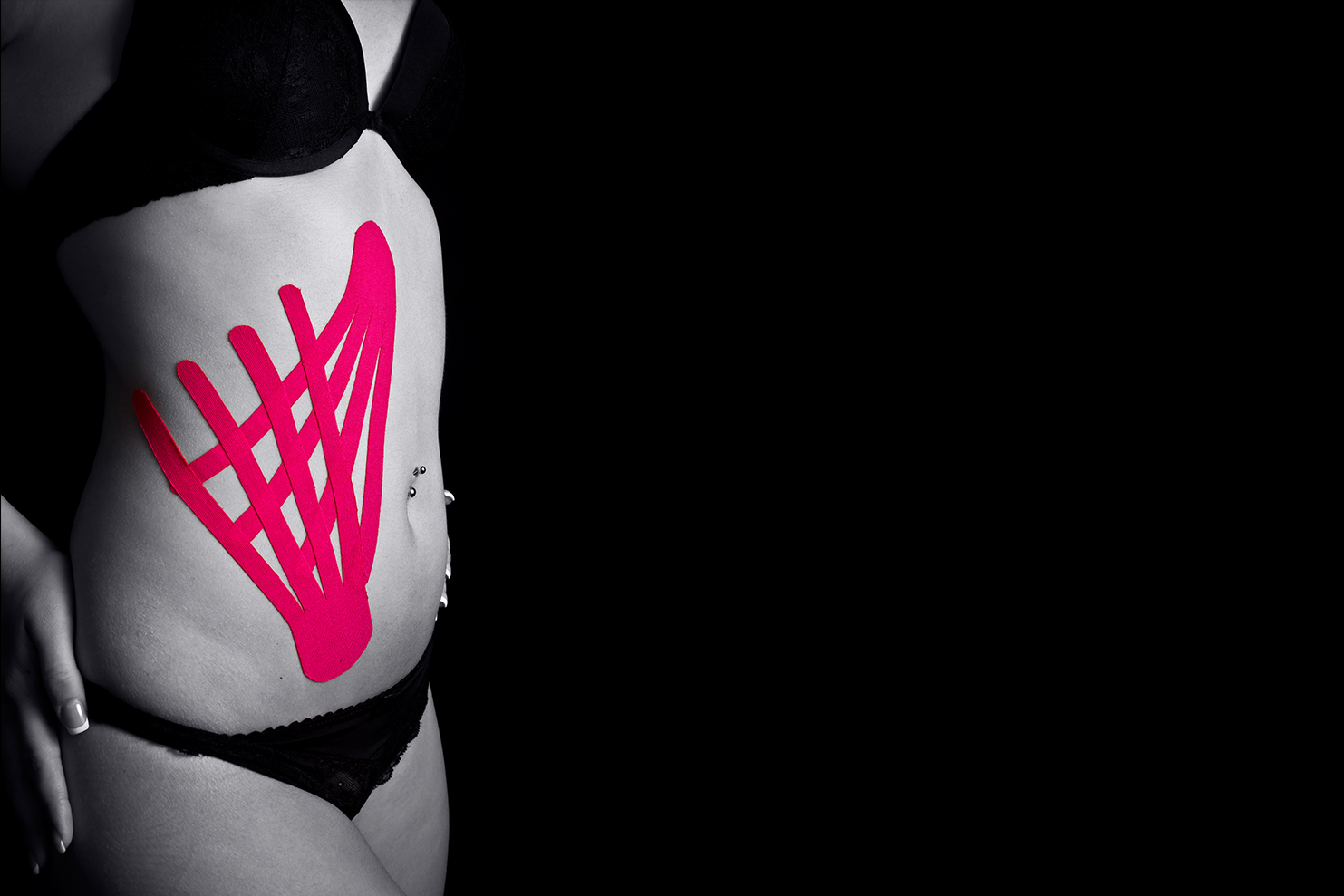
Indications: Acute injury of the ribs (swelling/haematoma)
1. Measure and cut two tapes equal in length. The length is about 20 cm, depending on patient’s anatomic features. Cut the tapes into 4 long strips. The tape base is 4 cm, and it is left integer.
2. Apply the base of the first tape without tension on the lower part of abdomen as close to the inguinal lymph nodes as possible. After application of the base, carefully apply the strips of the tape without tension on the zone of concern.
3. Apply the base of the second tape on the sternum. Apply the strips of the tape without tension over the strips of the first tape crossing them between each other.
Pectoralis minor muscle
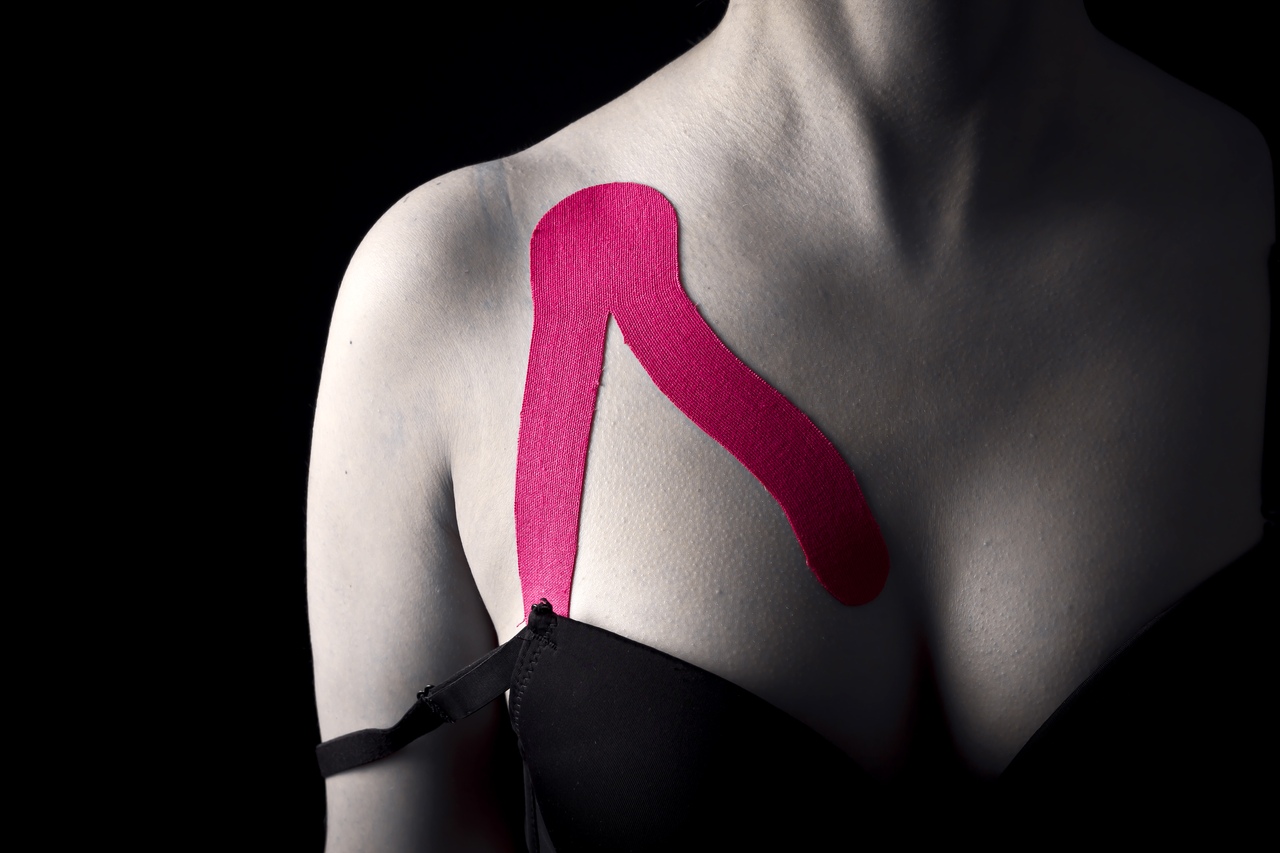
Indications: Thoracic outlet syndrome, trigger points, hypertonic pectoralis minor muscle
1. This method requires one Y-tape.
2. Apply the base of the tape slightly over coracoid process.
3. Ask the patient to abduct his/her shoulder backwards and apply the strips towards mammary gland according to the muscular shape with a 15 % tension.
Pectoralis major muscle
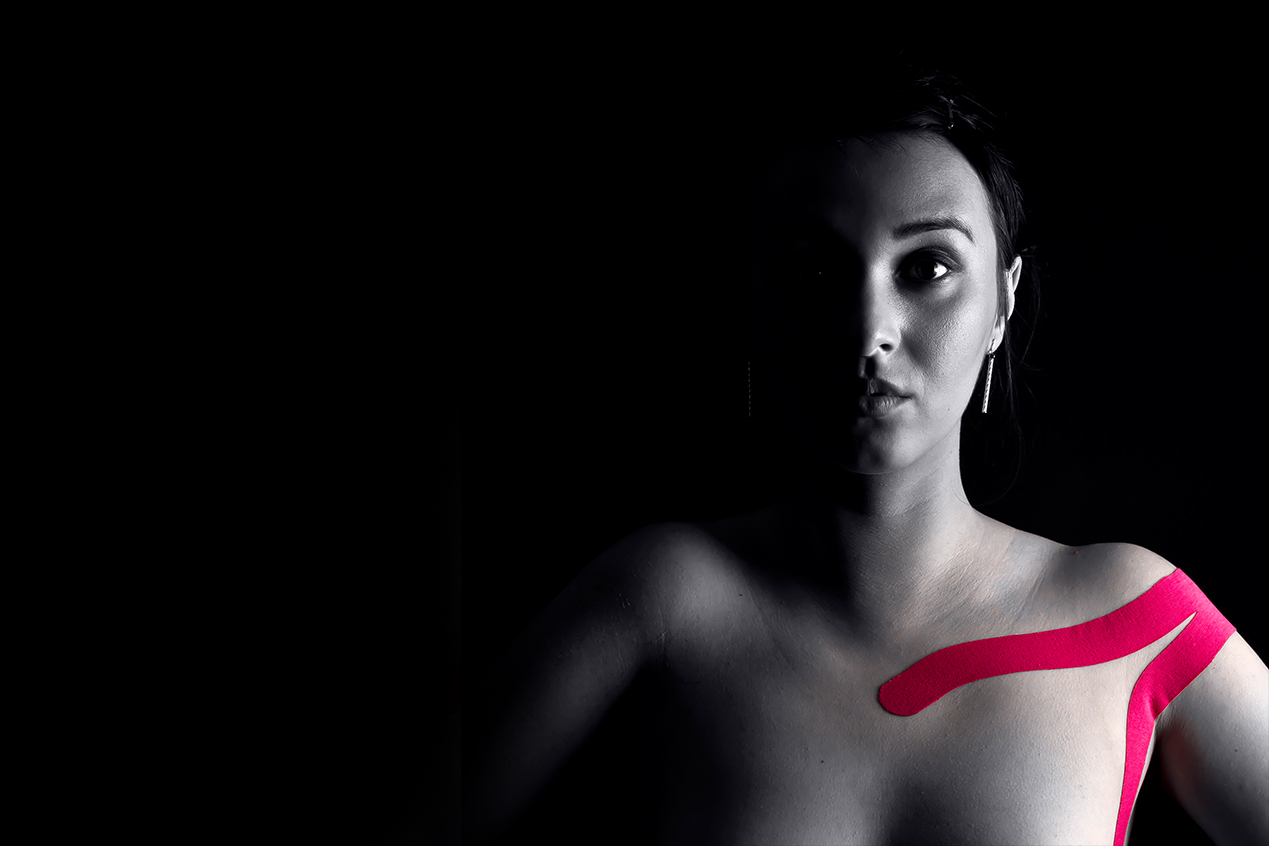
Indications: Thoracic outlet syndrome, tendinitis, trigger points, injury of rotatory cuff, hypertonic greater pectoral muscle
1. This method requires one Y-tape.
2. Apply the tape in the standing or sitting position.
3. Apply the base of the tape on the crest of greater tubercle of humerus, whereby the arm is in the neutral position.
4. Two remained strips of Y-tape are applied along greater pectoral muscle. It is important to stretch the muscle before application of the tape, therefore, it is required to raise the arm in shoulder by 90 ˚ and abduct it backwards.
5. The upper strip of Y-tape is applied with a 15 % tension along the clavicle towards sternum.
6. The lower strip of Y-tape is applied with a 15 % tension along the lateral part of pectoral muscle.
Install NOW "Medical Taping" Mobile App On Android or iOS!
More than 120 instructions!
English and Russian language! Professional Pictures!









 Shopping cart (0)
Shopping cart (0)
